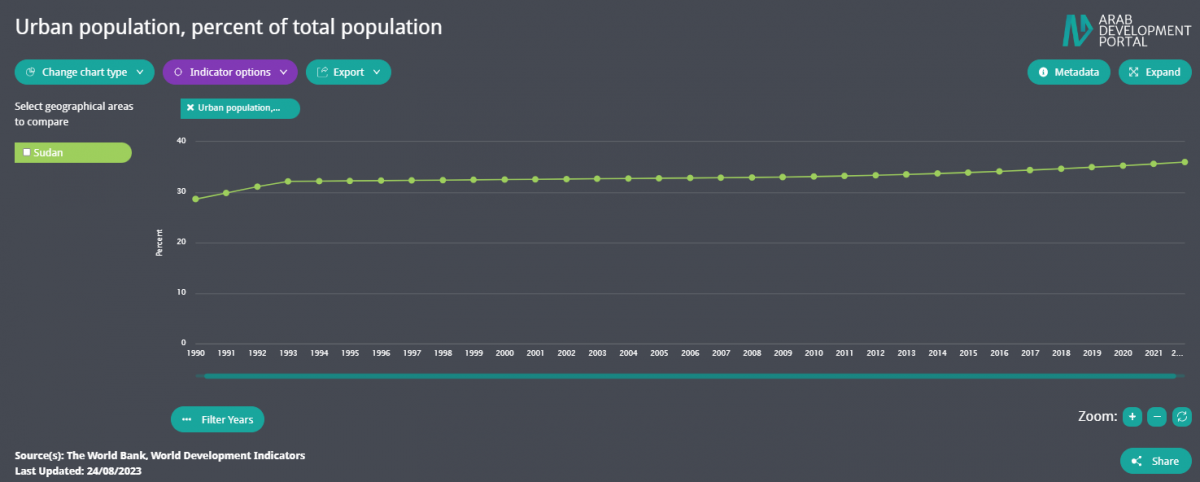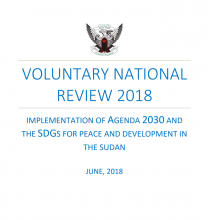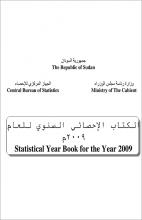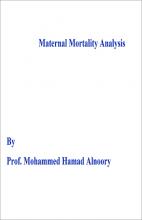 Sudan
Sudan
The total population of Sudan has considerably increased over the past couple of decades, reaching 46.26 million in 2022, compared to 25.96 million in 2000. The population is young with 60 percent below the age of 24 and a fertility rate of 4.38 births per woman in 2022.[1] The majority of Sudan's population is rural, with an urban population of 36 percent in 2022.[2] The maternal mortality in Sudan continues to be high, reaching 270 per 100,000 live births in 2020, almost two times the regional average of 132 per 100,000 live births.[3]
Sudan is a lower-middle-income and low-human development country with an HDI of 0.508[5], where 49.7 percent of the population lives below the international poverty line of 3.65 USD according to the latest available data in 2014[3], and half of the population are considered multi-dimensionally poor according to the latest available data from the Human Development Report of 2021.[5] As a result of the ongoing conflicts in Sudan and the secession of South Sudan in 2011, the number of people who need humanitarian assistance has increased from an estimated 5.5 million in 2018 to 15.8 million in November 2022 and then to 24.7 million in May 2023. Moreover, following months of protests, Sudan adopted a new constitutional declaration in August 2019 to guide a political transition for 36 months. However, the conflict that erupted on 15 April 2023 continues to have devastating consequences for civilians[6] Sudan is also located in a region that surrounds unstable countries, at the end of 2022, 1.09 million refugees were residing in Sudan.[4]
The adult literacy rate in Sudan at 60.7 percent of the total population in 2018 and gross enrolment rates in Sudan fall far below the regional averages. [3]
Agriculture, which assumed around 34 percent of GDP in the last 3 decades fell to 6.3 percent and 5 percent in 2021 and 2022 respectively [3], Sudan’s GDP (Purchasing Power Parity, constant 2017 prices) leveled at Int$ 167 billion and Gross National Income (GNI) per capita (Purchasing Power Parity, constant 2017 prices) at 3514 USD in 2022.[3] The 2011 Secession has led to a loss of three-quarters of the country’s oil production and half of its fiscal revenues, causing a structural shock to the Sudanese economy and real GDP growth contracted by -3.2 percent and -17 percent in 2011 and 2012, respectively.[7] The economy started recovering from 2013 till 2017 then it contracted by almost -2 percent till 2022 and it is estimated to contract again to -18.3 percent in 2023[7] Fiscal consolidation and tight monetary policy helped reduce inflation to 12.5 percent in 2015, however, it skyrocketed to 318.2 percent in 2021 and decreased to 87.3 percent in 2022. However, it is estimated to skyrocket again to 238.3 percent in 2023[7] The general government net lending/borrowing as a percentage of GDP continued to register a deficit on an average of -5.4 percent from 2012 but it decreased to reach -2.5 percent in 2022.[7]
General government gross debt in 2020 reached a high value of 275.2 percent of GDP, up from 84.4 percent of GDP in 2014. It decreased to 186.2 percent in 2022.[7] The external position is fragile, with the current account deficit at -11.2 percent of GDP in 2022[7] and limited international reserves that amounted to 0.18 months of imports according to the latest available data in 2017[3].
The labor force participation rate in Sudan has remained stable since 1990, ranging between 48.4 percent and 51.3 percent. The male labor force participation rate of 68.6 percent was 2.3 times higher than that of women at 29.3 percent in 2022. The unemployment rate was estimated at 18.7 percent in 2022. Women's unemployment rate registered 30.1 percent compared to 13.7 percent for men in 2022. The youth unemployment rate stood at 34.4 percent in 2022 with the biggest burden falling on young women, where their unemployment rate registered 44 percent compared to 29.4 percent for young men in 2022.[8]
This overview was last updated in November 2023. Priority is given to the latest available official data published by national statistical offices and/or public institutions.
Sources:
[1] Population Division of the Department of Economic and Social Affairs of the United Nations Secretariat. 2023. World Population Prospects. [ONLINE] Available at: https://population.un.org/wpp/ [Accessed 23 October 2023].
[2] Population Division of the Department of Economic and Social Affairs of the United Nations Secretariat. 2023. World Urbanization Prospects. [ONLINE] Available at: https://population.un.org/wup/ [Accessed 23 October 2023].
[3] The World Bank. 2023. World Development Indicators. [ONLINE] Available at: https://databank.worldbank.org/data/source/world-development-indicators [Accessed 23 August 2023].
[4] United Nations High Commissioner for Refugees (UNHCR). 2023. Refugee Population Statistics Database. [ONLINE] Available at: https://www.unhcr.org/refugee-statistics/download/ [Accessed 15 October 2023].
[5] United Nations Development Programme (UNDP). 2023. Human Development Index. [ONLINE] Available at: https://hdr.undp.org/data-center/documentation-and-downloads [Accessed 25 October 2023].
[6] UNOCHA. 2023. Sudan Overview. [ONLINE] Available at: https://www.unocha.org/sudan [Accessed 25 November 2023].
[7] International Monetary Fund. 2023. World Economic Outlook. [ONLINE] Available at: https://www.imf.org/en/Publications/SPROLLs/world-economic-outlook-databases#sort=%40imfdate%20descending [Accessed 24 October 2023].
[8] International Labor Organization. 2023. ILO stat [ONLINE] Available at: https://ilostat.ilo.org/ [Accessed 23 September 2023].
Data Highlights
-
The majority of Sudan's population is rural, with an urban population of just 36% in 2022.




